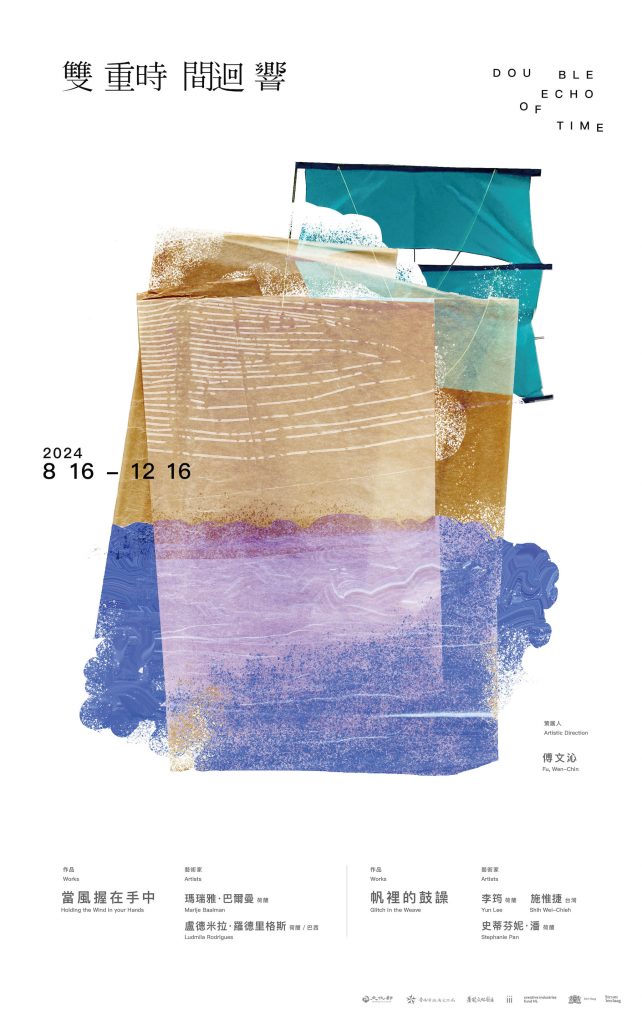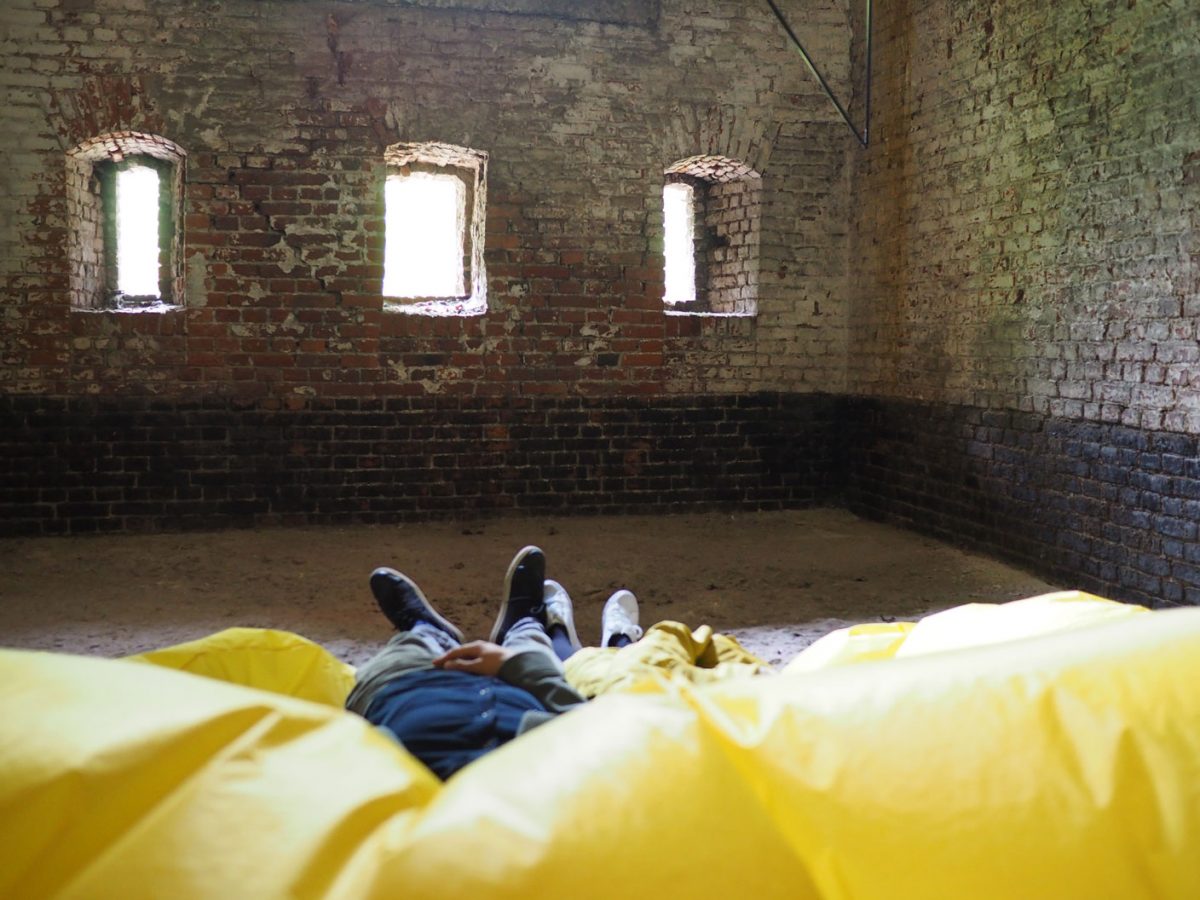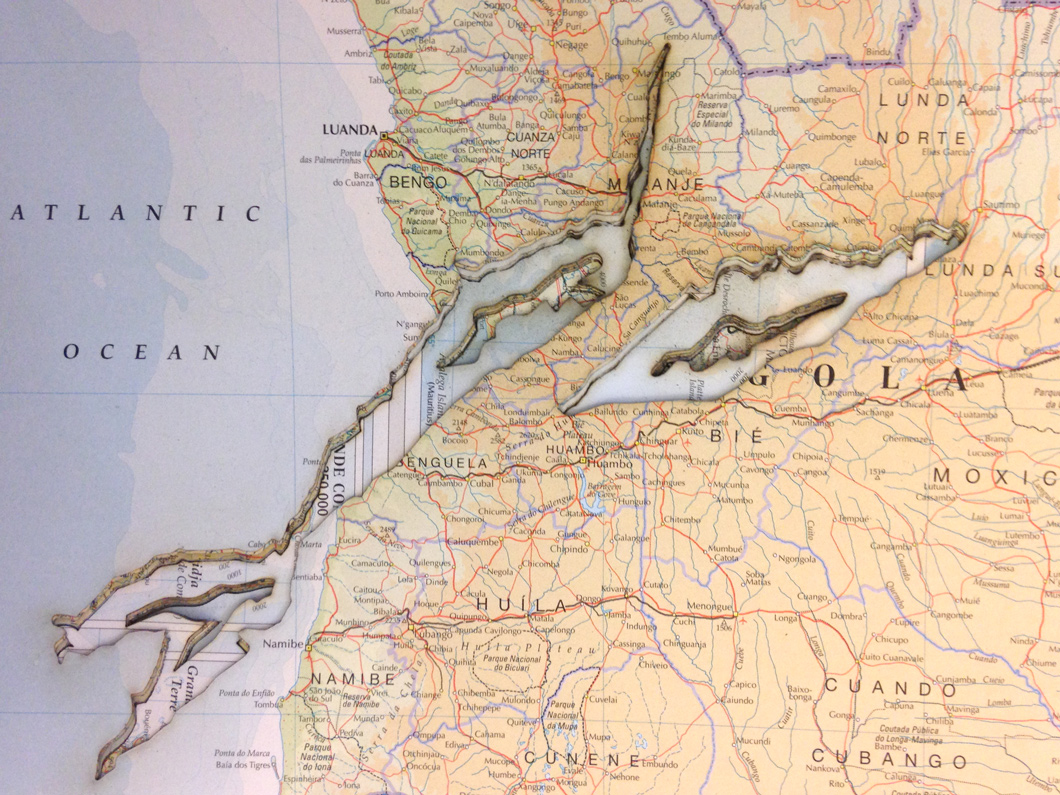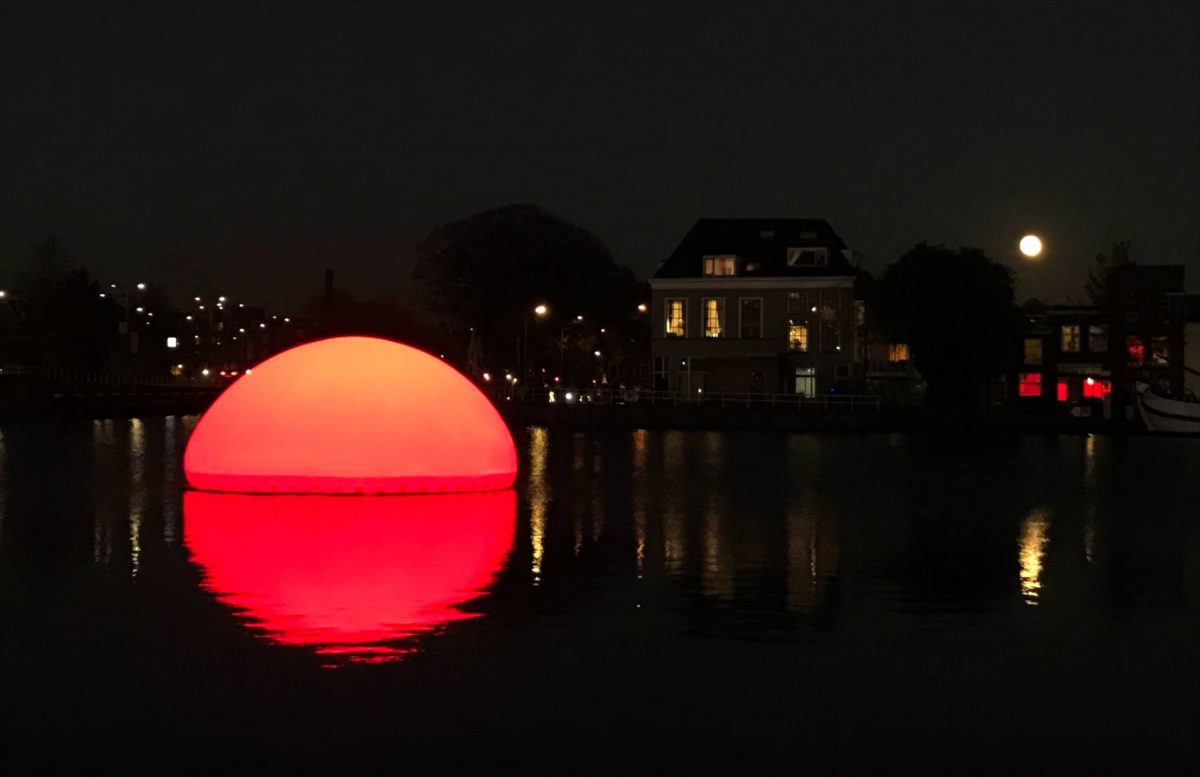For the exhibition ‘Double Echo of Time’ Ludmila Rodrigues collaborated with Marije Baalman creating the spatial installation Holding the Wind in Your Hands. The show, opened on August 16th, 2024, was the culmination of a five-week long residency, as a cooperation between Soulangh Cultural Park, Jiali, in Taiwan and iii in the Netherlands. Photos by Andrew 徹.
‘Double Echo of Time’ is based on the history shared by the Netherlands and Taiwan since 1624. By revisiting archives such as “De dagregisters van het Kasteel Zeelandia” and “The Formosan Encounter”, this multidisciplinary exploration breathes new life into lesser-known historical records. The exhibition consists of two works, Holding the Wind in Your Hands (Baalman & Rodrigues) and Glitch in the Weave (by Yun Lee, Stephanie Pan and Wei-Chieh Shih) during their residency at Soulangh Cultural Park in August 2024. The artists used digital tools and storytelling methods to reveal the power dynamics that determine which stories endure the test of time. Both works reinterpret archives in different ways. Incorporating elements of 17th-century maritime transportation and the strongest natural forces at sea—ships and wind—Holding the Wind in Your Hands invites viewers to interact with them, while Glitch in the Weave emphasizes the bias in historical narratives and the power dynamics that determine which stories endure.
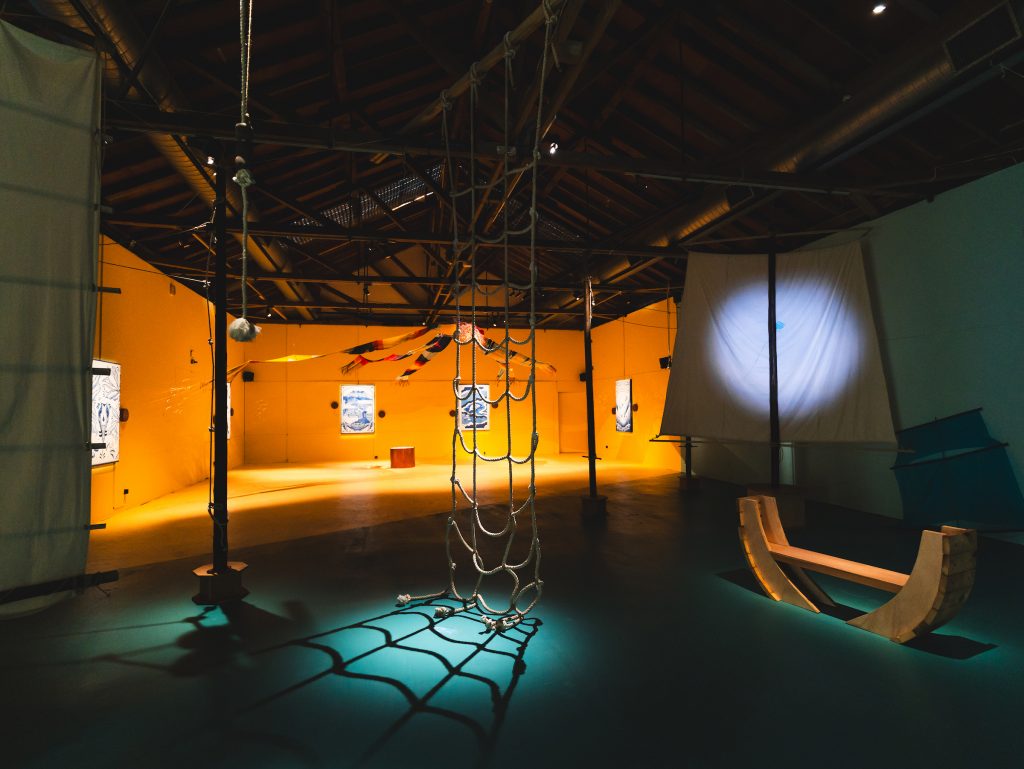
Holding the Wind in Your Hand departs from the experience of seafaring, examining its social and technological features to create a multisensory experience inside the Soulangh’s exhibition hall. The artists attempt to blend methods of kite flying with the 17th century sailing technologies that brought distant cultures closer together.
While land and water can be subjected to territorialization, thus becoming objects of geopolitical dispute, the winds cannot be easily measured, or controlled, neither claimed by any state. Air, blast, breeze, gale, gust… As a force of nature, the wind can be a beneficial energy source, or a pleasant breeze in the hot days; however, in extreme weather conditions, the wind can be dangerous and a fatal agent of disaster, during tempests, cyclones and so forth. Wind cannot be tamed, it doesn’t follow any human regulations. We can only learn to collaborate with it.
In the 17th century, both the Chinese and the Dutch took an interest in the Tainan area and whoever could hold the wind in their hands had a strategic advantage. The technologies of the ships, the shapes of their hulls, the design and rigging of the sails were different between the Asian junks and the European ships (e.g. brigantines and fully rigged ships). Thus the diverse ships could catch the wind in different ways.
On one hand the artists chose to work with natural materials, striving to revive techniques of the 17th century. On the other hand, they utilize electronics to activate the installation and orchestrate sensations as in a hybrid environment.
In continuity with her work V.L.I.G. (vliegen, liggen in gedachten) presented at Soulangh in 2022, Marije Baalman produced two kites inspired by European and Chinese sailing ships. In collaboration with Ludmila Rodrigues, they expanded the work into a multi-sensory installation that encompasses sound, image, movement, and air flows. In their work Holding the Wind in Your Hand, the public is encouraged to walk through the space and actively listen to the sonic composition inspired by the action of the wind on the old sails.
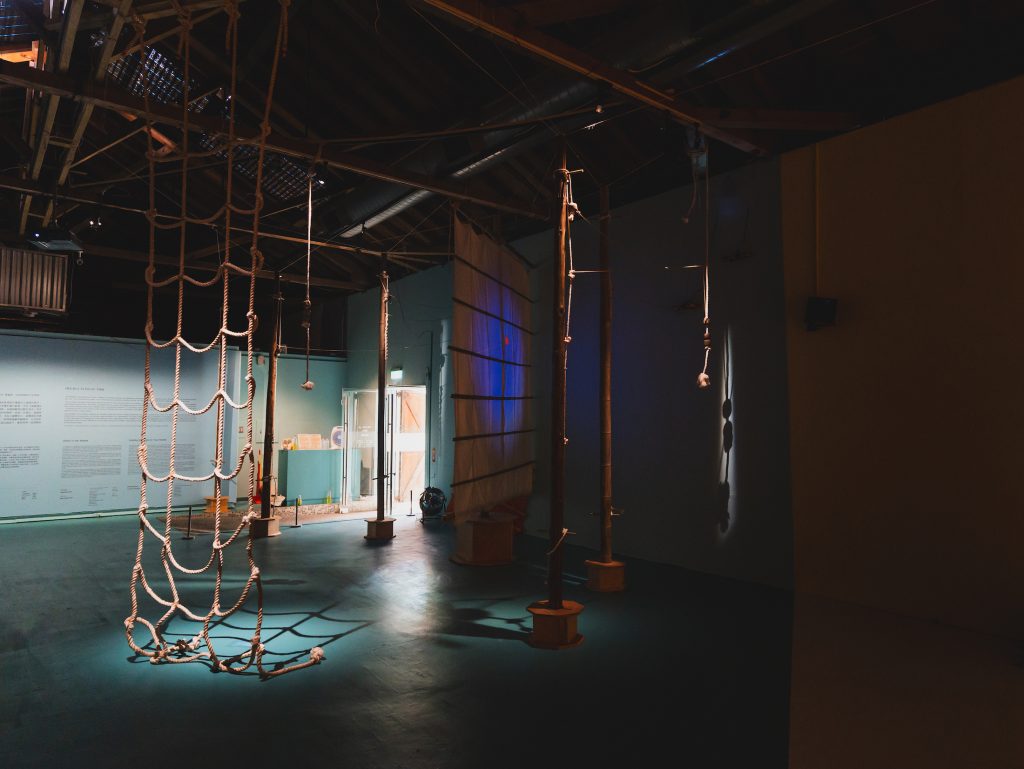
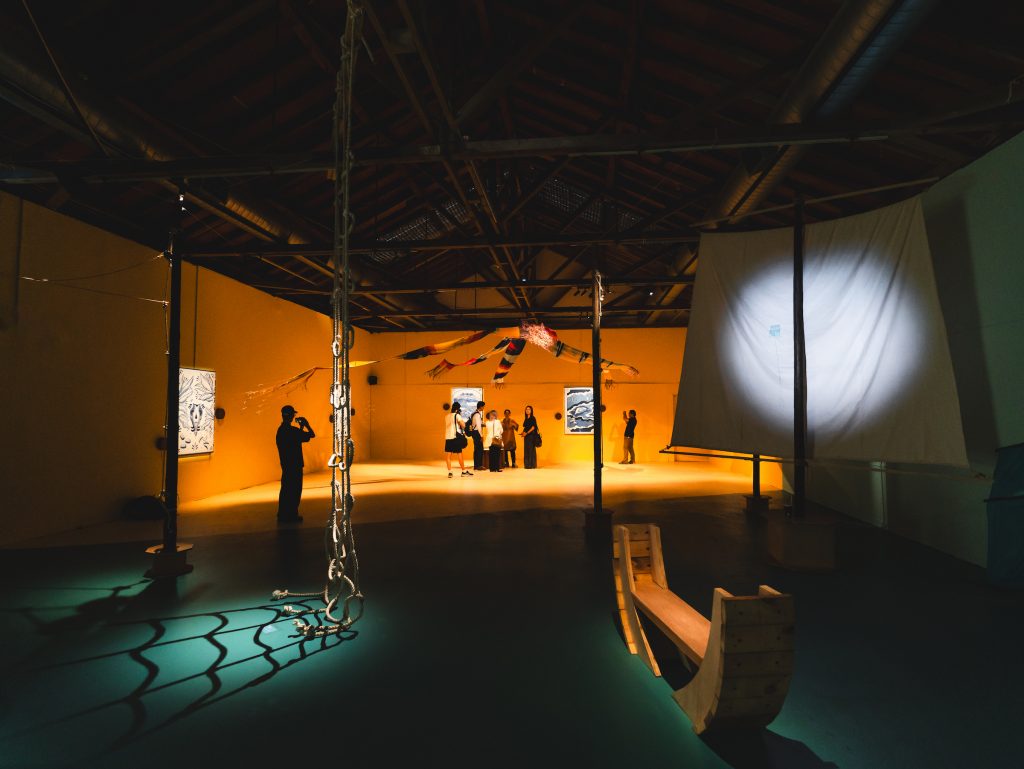
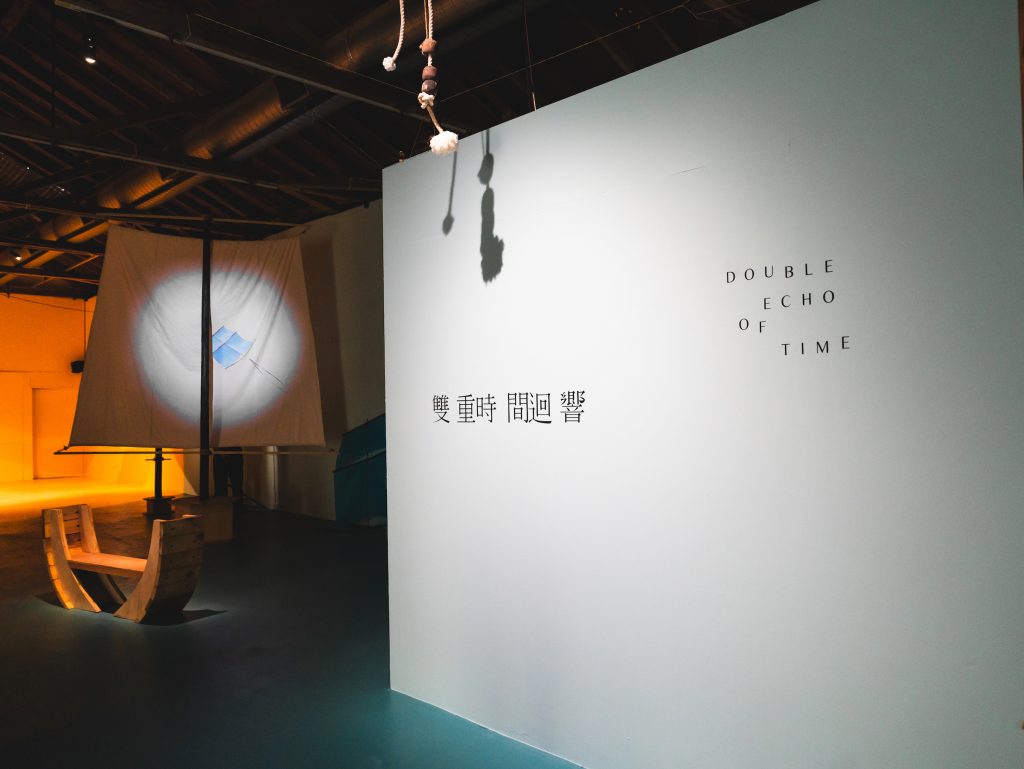

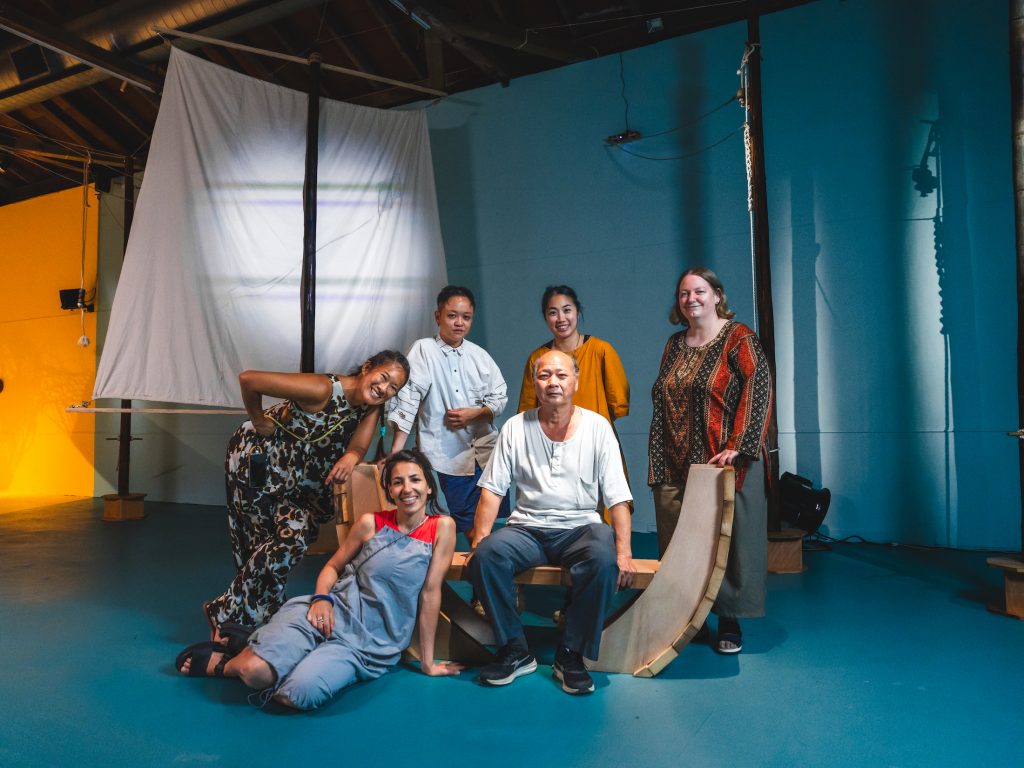
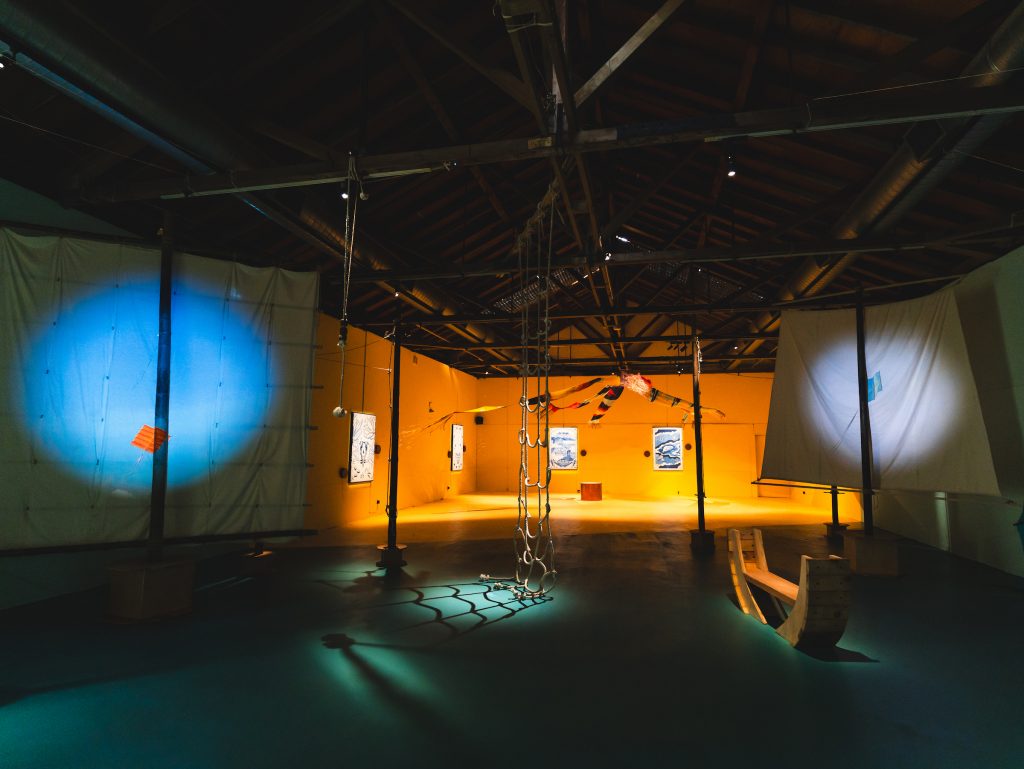
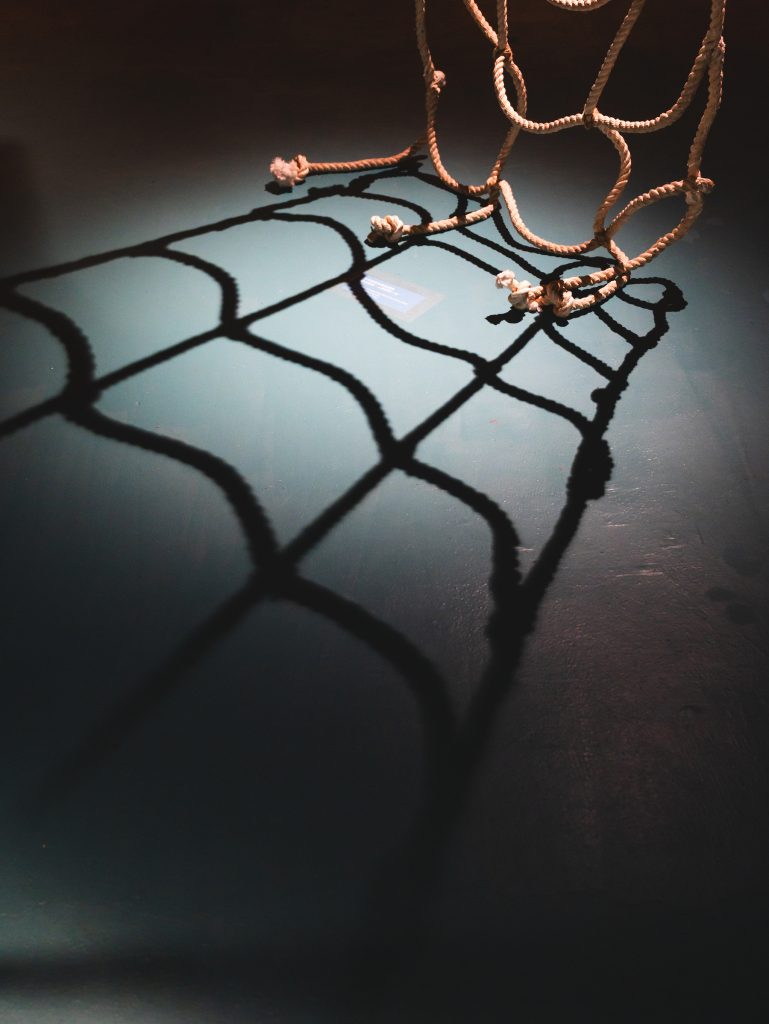
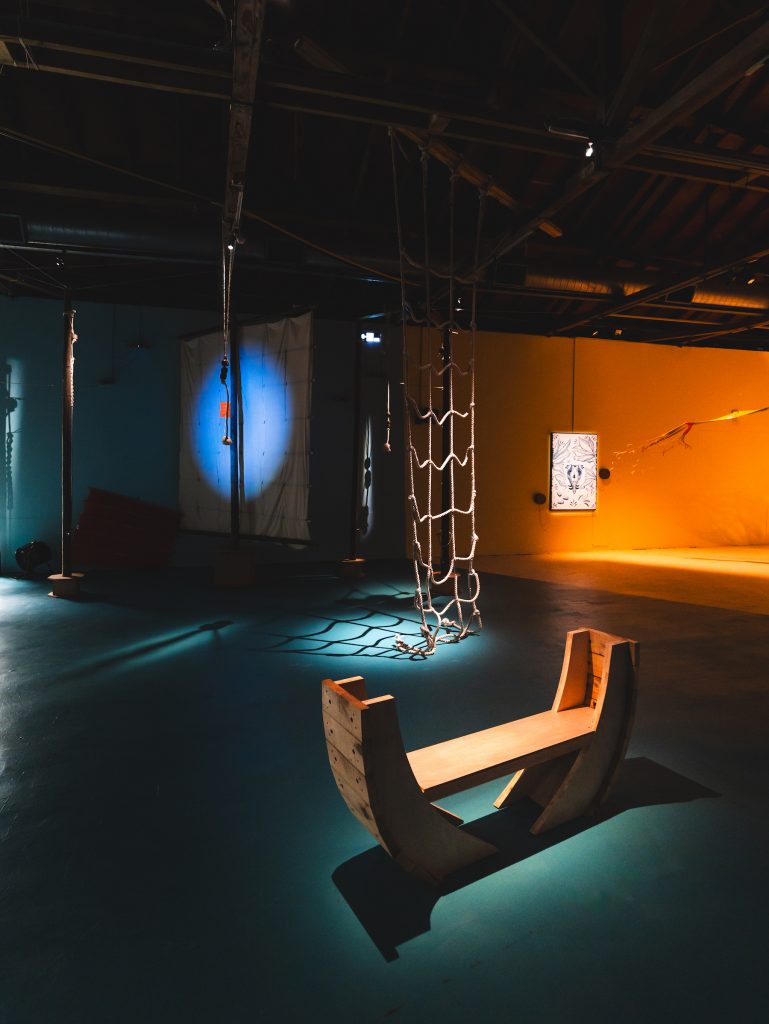
With thanks to iii, Wen Chin Fu, the Heritage Architectural Materials Bank 文資建材銀行, Yu-jung Chen 陳昱榮, Xin Ping, 林書杰, Mike Rijnierse and Stroom Den Haag.
